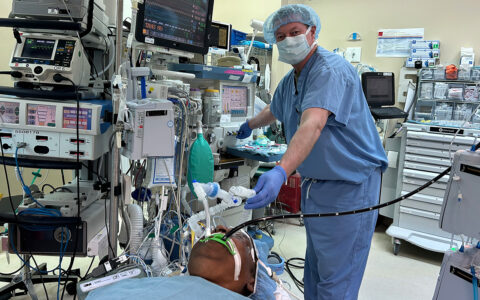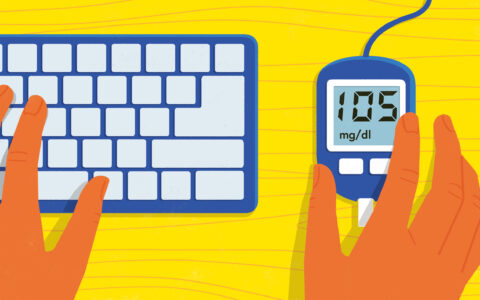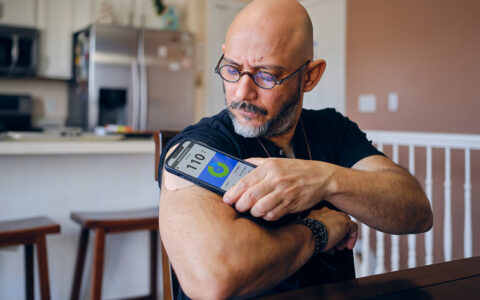Clinics serving patients with type 2 diabetes may now deploy an automated text-messaging system to send friendly communications reminding patients to take their medications, choose healthy foods, and stay active.
“REACH turned out to make a real difference, and also be kind of insanely engaging in a diverse group of adults with type 2 diabetes,” said Lindsay S. Mayberry, Ph.D., an associate professor of medicine and biomedical informatics. “People really liked it. In an early study, the median response rate to interactive texts was 91 percent over a year.”
Important Upticks Seen
“With REACH, we improved patients’ self-efficacy and medication adherence, we reduced barriers to medication adherence, and we did in fact improve hemoglobin A1c [HbA1c],” Mayberry said.
“The effects on HbA1c were actually quite large,” added Lyndsay A. Nelson, Ph.D., a research assistant professor of medicine. “After 6 months, for those with HbA1c over 8.5 percent, we had a 0.74 percent reduction, when a 0.5 percent reduction is clinically significant.”
“The effects on HbA1c were actually quite large.”
While the issue of how long HbA1c reductions must be sustained to prevent complications is not definitively settled, some evidence does show that short-term reductions can reduce risk, Nelson said.
Facing the Highest-Risk
Nelson and Mayberry recently worked with patients, healthcare professionals and clinic administrators from community health centers in and around Nashville to explore REACH’s implementation potential. These clinics serve patients who do not have health insurance or have Medicare or Medicaid.
Findings from their new study, published in the Journal of Clinical and Translational Science, indicated enthusiasm for adoption of REACH.
Low-Cost Support
As they reported, REACH demands relatively few resources from the safety net clinics that often serve high-risk patients.
“It’s not a human being or AI that generates the texts; they’re automated and can provide behavioral nudges and self-monitoring support between visits that clinicians can’t provide,” Mayberry said. “The patient fills out a survey, and the survey tells the computer which buckets of messages to send to them on a predetermined schedule.”
“It’s not a human being or AI that generates the texts; they’re automated and can provide behavioral nudges and self-monitoring support between visits that clinicians can’t provide.”
As Mayberry indicated, patients are enthusiastic about the program.
“Most of the participants felt very comfortable with texting.” Nelson added. “Even if they had never texted before, they were open to learning.”
REACH Available Now
Nelson and Mayberry are working to determine the best standard operating procedures and strategies for implementing REACH into clinical care settings that reach high-risk patients.
“We’ve had around 15 community clinics all over middle Tennessee say they want to work with us in an implementation study, making it available to support their patients,” Mayberry said.
The researchers are continuing to seek funding. Open questions they aim to address defining the optimal ways to enroll patients and collect patient information, as well as how to assign personnel at the clinic to do key tasks.
Clinics or health-care payers who want to offer REACH to patients can license it now through MEMOTEXT.





